“It’s really hard to ignore the issue of garbage and consumption when you’re laying in it”
Photographer Gregg Segal turned the camera on himself and his family. With his son’s head resting on his chest, Gregg and his wife Dani lay looking up at the camera surrounded by a week’s worth of their own waste - milk bottles, a pizza box and a multitude of plastic wrappers that floated in a murky soup of water around them.
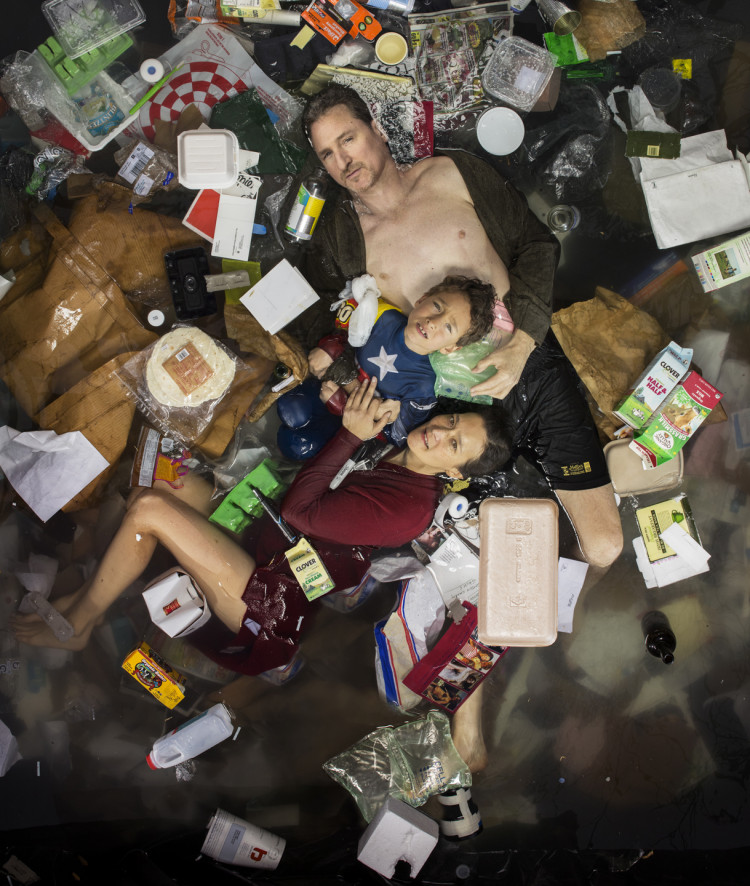
The Segal family
“My son was seven years old and I wanted him to have a better understanding of our impact on the planet - so it was kind of a teaching moment for me as a father - to save our garbage as a family and take stock of what we produce and consume and throw away.”
Prior to this Gregg had approached friends and neighbours asking them to keep a week of their waste, and then lie down in it for an intimate portrait with their hidden consumption habits. The resulting series, 7 Days of Garbage, shows a cross-section of what Gregg describes as our ‘waste epidemic’.
Some of those featured in the series have a glimmer of guilt in their eyes, for others they pose with muted acceptance, while a few even seem to be revelling in their gluttony - laughing in delight or smiling at the camera. One image features a blissfully nihilistic young woman in a bathing suit taking a drag from a cigarette while surrounded by empty Starbucks cups, fast food containers and cigarette butts.
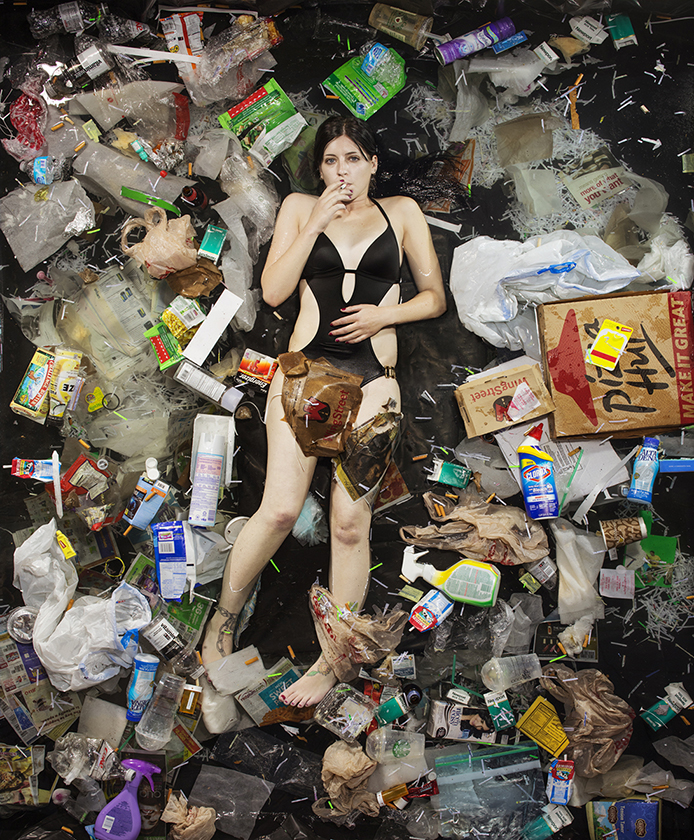
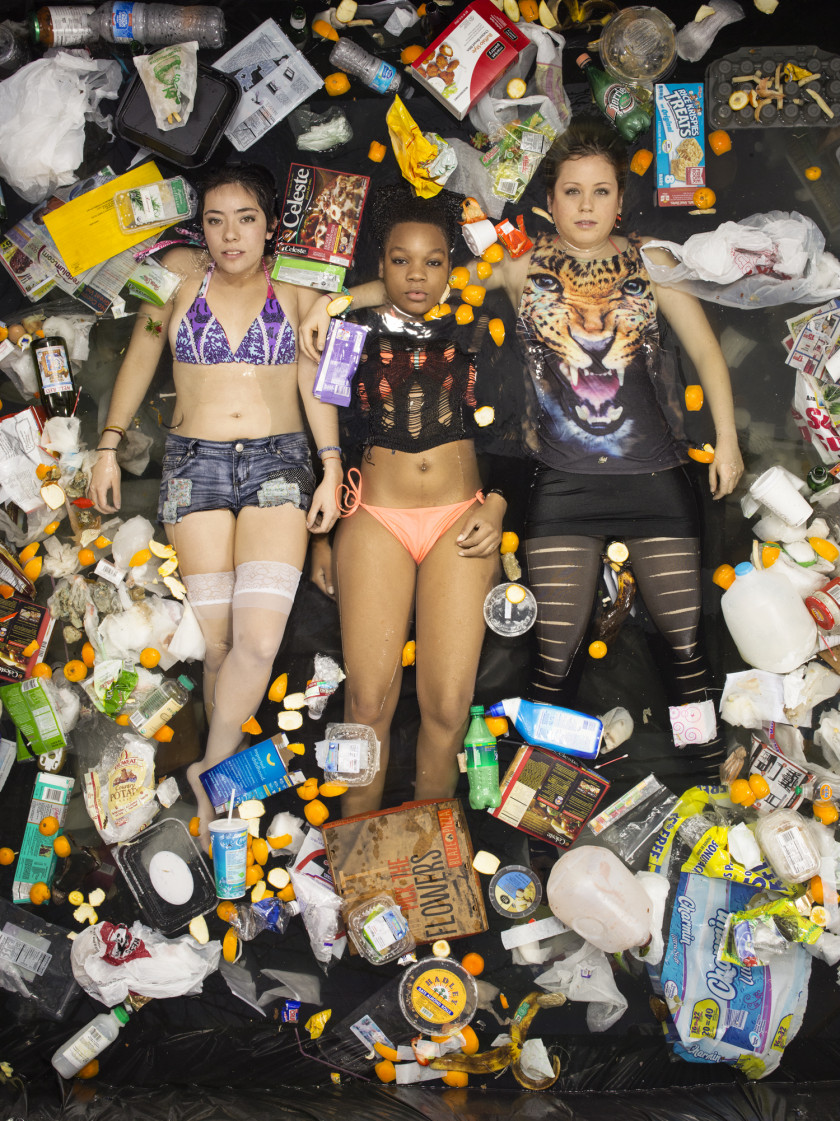
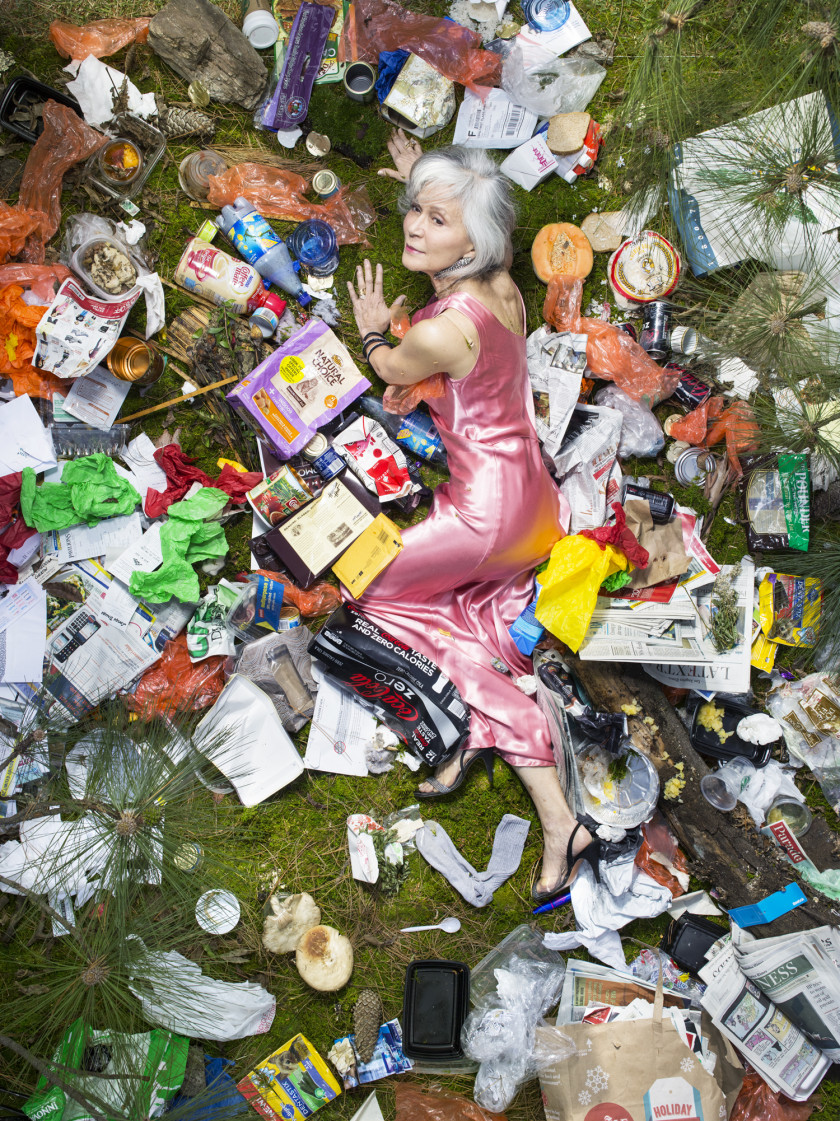
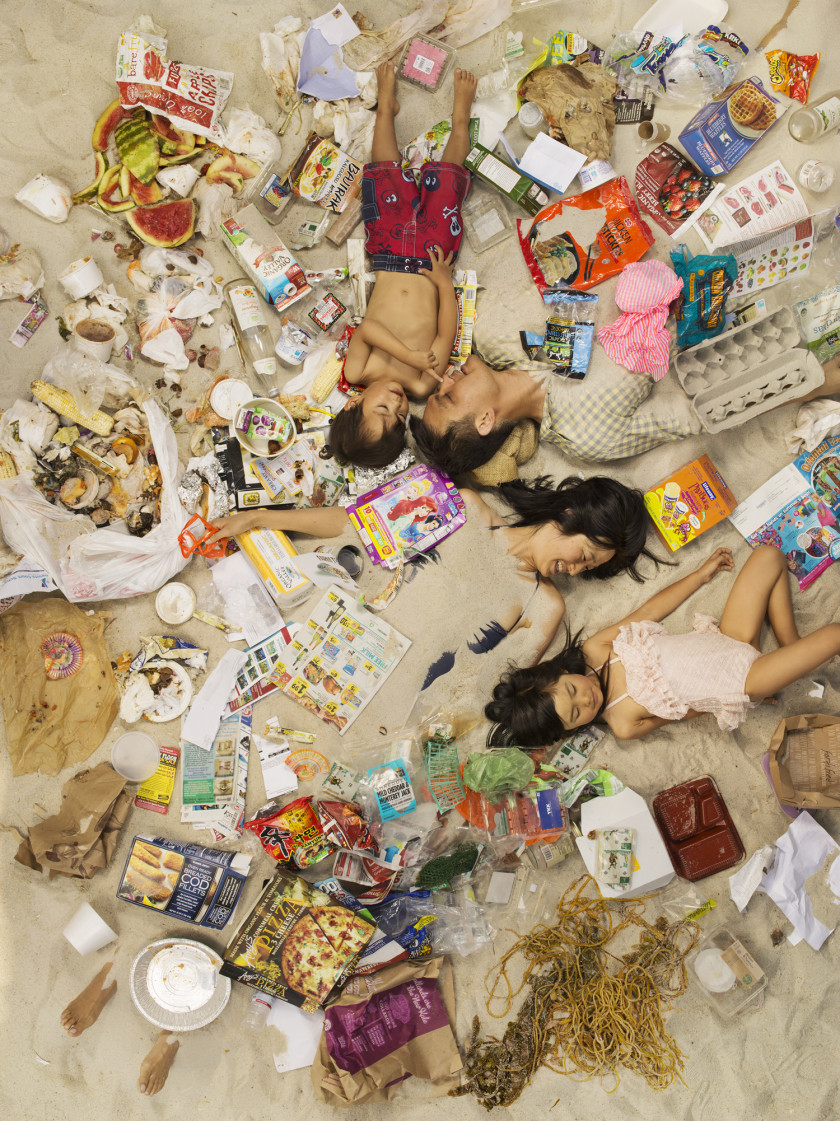
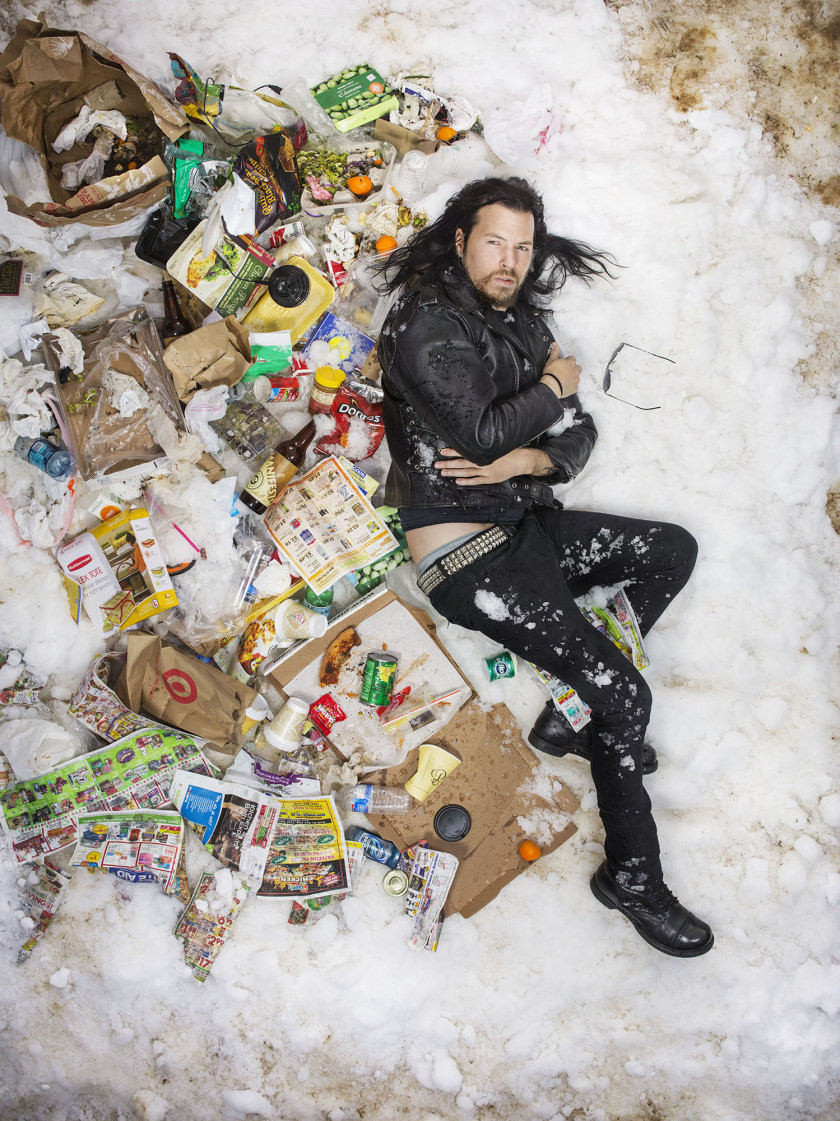
As for why the US-based photographer chose to add himself and his family into the series, he says he didn’t want to be a hypocrite.
“I didn’t want to point my finger at everyone else saying you are the problem. Accept that I am part of the problem. I think we all are, and so I thought it made sense to photograph myself and my own family too. It made it easier for me to convince people to lay in their own garbage if I was willing to do that myself.”
He was skeptical, at first, whether it left much of an impression on his son.
“For a kid it’s hard to know how much they are absorbing.
“But a couple of weeks after that shoot he was in the car with me and he had a far away look in his eye and he said,
‘You know dad, pretty soon the whole world is going to be covered in plastic’
‘A hundred years ago there was no plastic, there wasn’t even one plastic thing on earth, and there sure is now’ - it seemed he was kind of having an epiphany about plastic, it came bubbling to the surface that afternoon in the car.”
Since then the family have tried to find little ways to cut down their consumption, be it recycling or composting or bringing their own containers to stores.
“As a family we try and reduce the amount of garbage we produce - If everyone does the little things it can make a big difference.”
7 Days of Garbage shares its origins with a photo series he’d shot earlier in his career called Detritus, which featured portraits of people all around the world accompanied by a doppelganger made out of their waste.
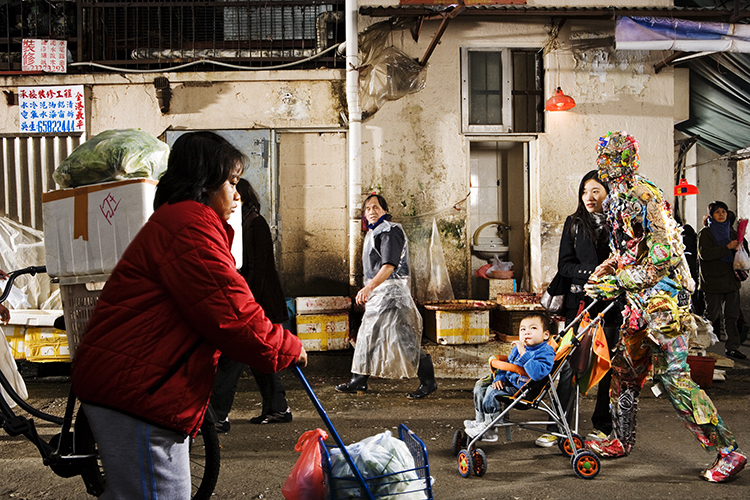
Detritus: Hong Kong market
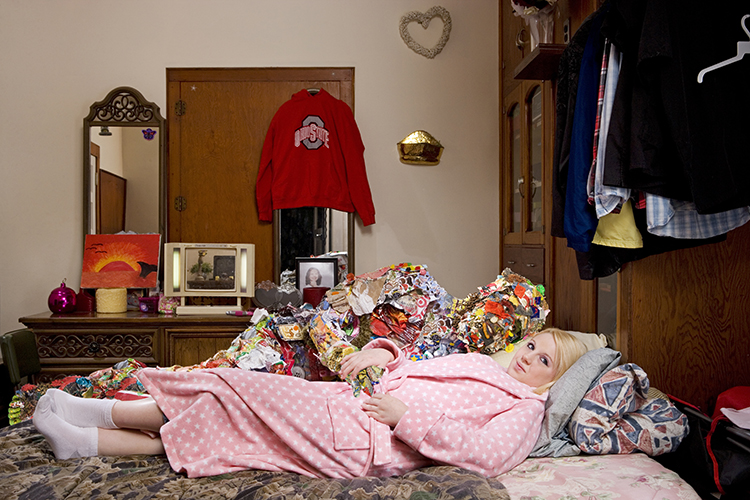
Detritus: Ohio girl
“We have a tendency to throw our garbage away and not think about where it’s going, so I thought what if our garbage found us and glommed on to us, what if everything we threw away reformed itself in our own image, as a reflection of ourselves i guess, and our habits.”
The impact of waste, especially plastic packaging, has been an ongoing theme for Gregg.
“I did do a piece I’d like to return to on photographing plastic in the ocean that is decomposing, when most of us think about plastic in the ocean we picture plastic bottles that are intact. We don't really think about the fact that a lot of the plastic is very slowly breaking down and turning into soup in the oceans. I photographed some samples brought back from the Pacific garbage patch by a biologist called Captain Moore, he has studied the garbage patch and brought back samples and I photographed them for a magazine, and they are kind of beautiful and eerie looking. Soupy viscus bits of plastic that are sort of meshed with sea life, so that’s another approach I’ve taken to the subject as well.”
For now, he is just about to launch a book with his latest photo series Daily Bread.
“In the process of doing the garbage series it struck me that so much of what we are throwing away and what we consume is packaging - plastic packaging. It struck me that we don’t really think about what we are eating. Wouldn't it be interesting to keep a journal of what we eat in a week - and photograph that at the end.”
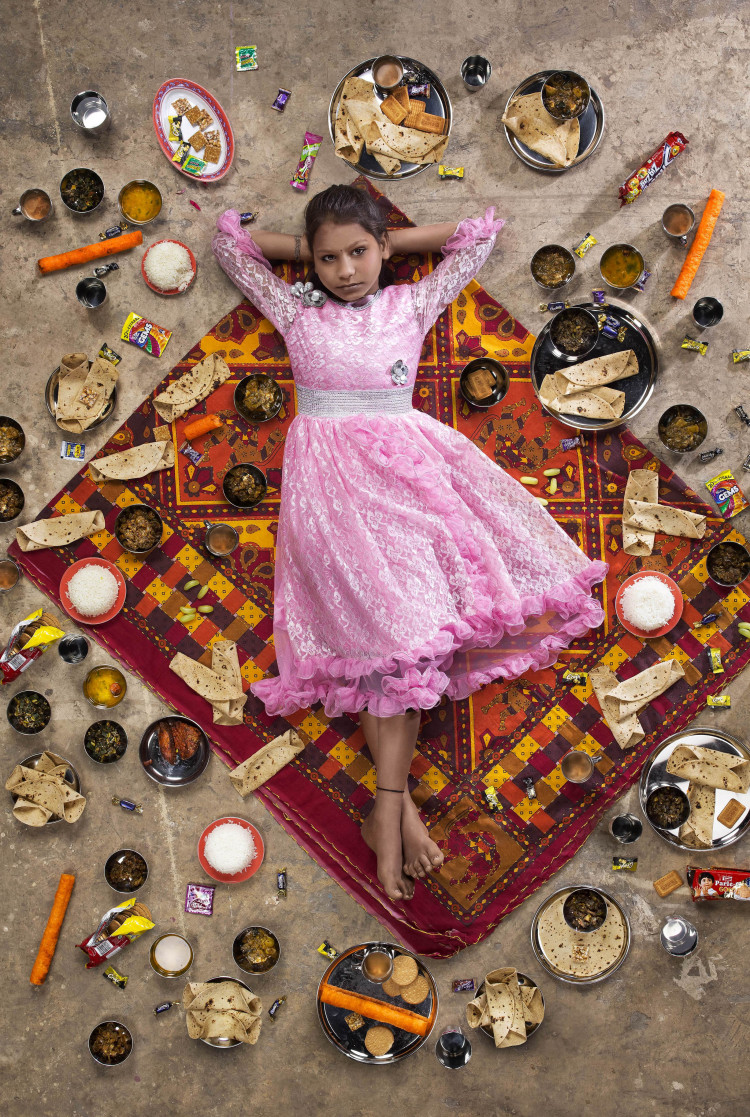
Anchal, Mumbai
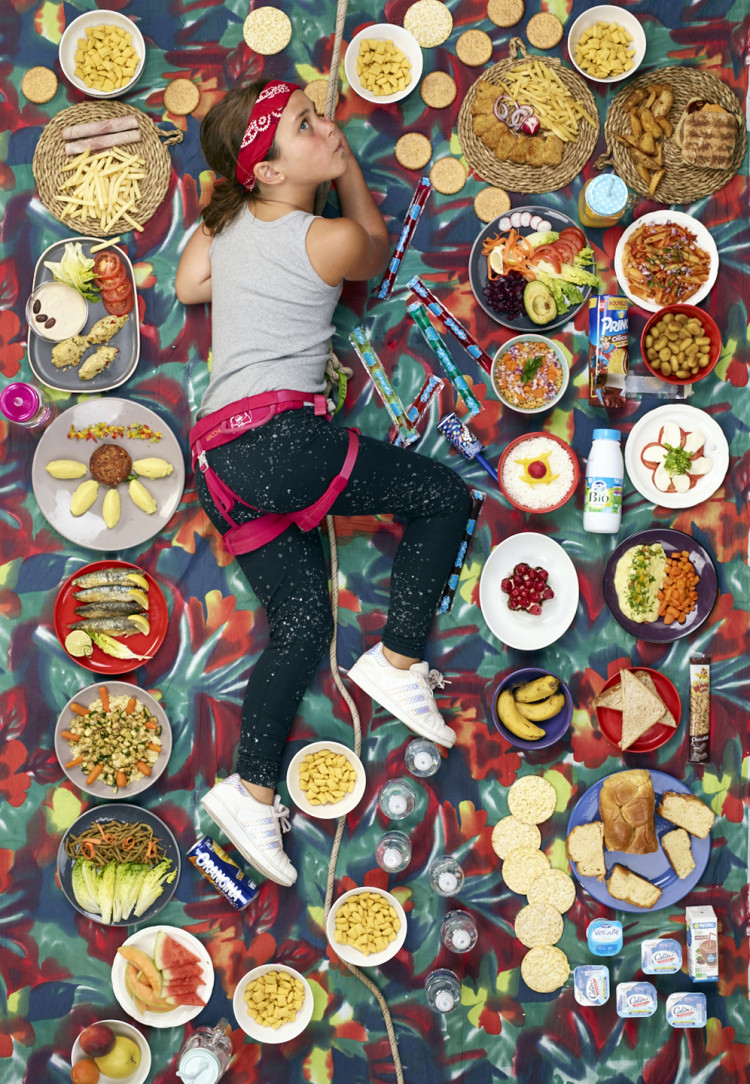
Lily, Nice
“I decided to focus on kids because eating habits form when we are young, and if you don't get them right by the time you are 9 or 10 years old it’s much harder to correct later on in life.”
The project quickly expanded into a global smorgasbord, showcasing diets from around the world with pictures of children and their weekly food from Sri Lanka to Germany, across Africa and around the Middle East.
“Looking at the biggest consumers of junk food and fast food, it's usually poorer people in the US but I was surprised to find in India that fast food is more of a luxury and status symbol. I photographed middle-class kids in India who have enough disposable income to go and have Pizza Hut and KFC and was surprised to find some of the poorest kids had some of the healthiest diets.”
“A lot of vegetables and fruits and nuts and grains and legumes. Very little processed packaged foods. So that was a surprising thing to discover doing this project.”
He’s philosophical about why he chooses to use his photographic skills to explore social and political themes.
“To me photography is - it’s an arm of sociology - of studying people and culture and communities. The things that make us tick as human beings.”
To view more of Gregg Segal's photography, you can visit his website here.